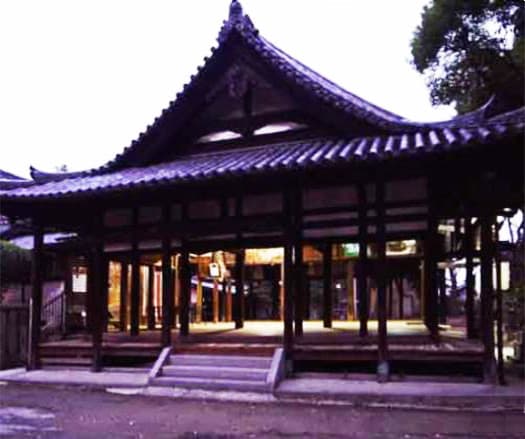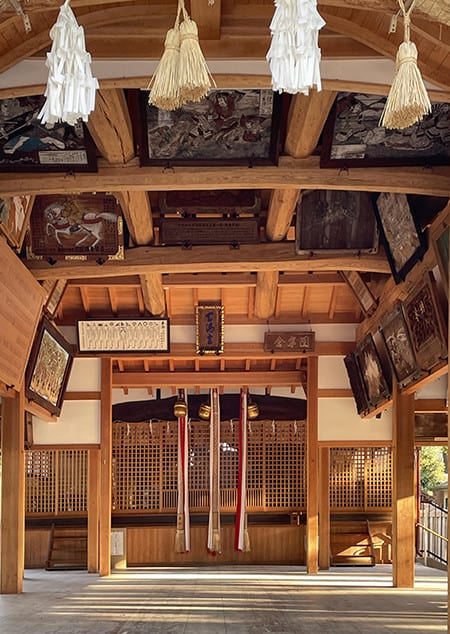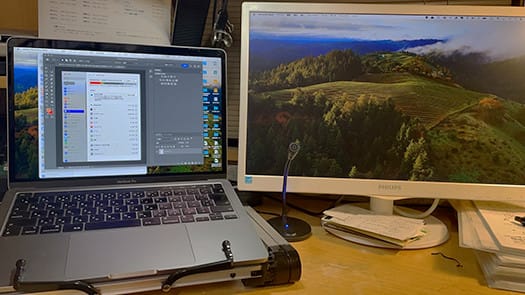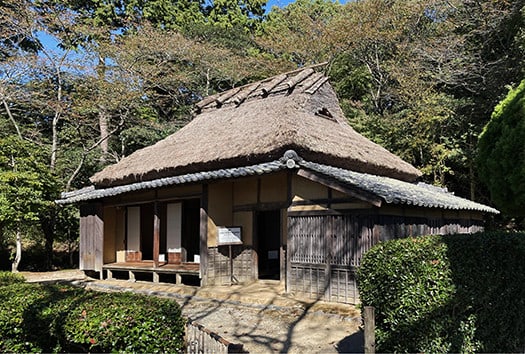
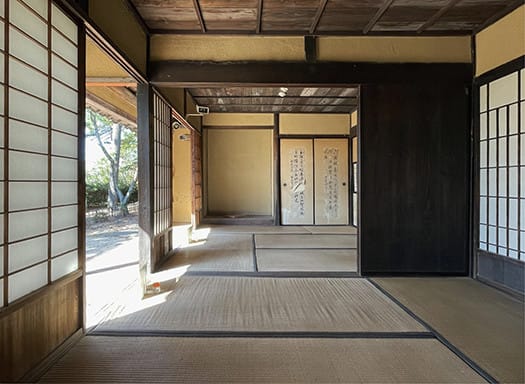
地域住宅雑誌という仕事をはじめてその経営を次の世代にバトンタッチしたのがわたしの現在ですが、巨大な足跡を残された「日本的な家と暮らし」の先人探求者として、あらためて柳田國男さんの民俗学とさらには柳宗悦の民藝運動というふたつの存在に強く惹き付けられているところです。
現代では高断熱高気密という住宅性能の進化発展ということが生起した。北海道でその意識的、科学的な解明、具体的な手法の開発、一般化というプロセスを同時代人として経験して、そのことをできるだけ「わかりやすく」メディアを通して情報発信してきたのだと思うのです。そういう現場に居続けていると気付かない視点として「同質の目的性を持った日本の過去の社会運動」という見方が自分の中にすこしづつ芽生えてくる部分がある。
写真は日本の民俗学を創始した柳田國男さんの生家。先般来触れてきた、兵庫県福崎町にあって遠い同族と思える三木家住宅とも近く、近隣関係として深く関わっていた家なのですね。柳田さんは地域の「知の情報センター」機能を持っていた三木家住宅の蔵に蓄積されていた「蔵書」を少年期の丸々1年間、読書の海として読みふけっていたのだという。あまりに静かに読み続けていたので、隠居さんが不安に感じて生存確認したことすらあった(笑)という。
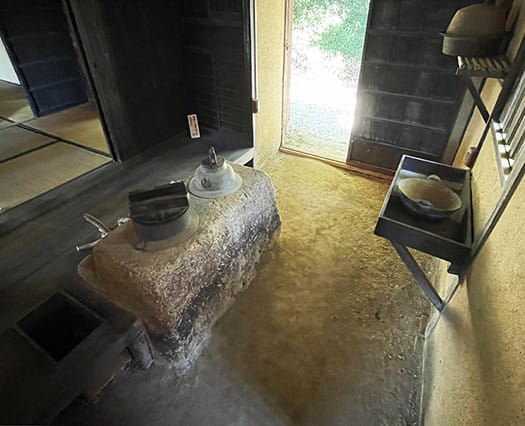
明治8年(1875)に柳田國男はこの家に生まれ、10年間暮らした。平屋で4畳半2間+3畳2間、それに土間空間が付設されている整形四ツ間取り・田の字型。江戸時代18世紀中頃当時の一般的な農家の基本平面をもつ。土間部分の面積は不明ですが目測ではトータルの床面積は20坪に満たないと思われる。
柳田國男さんはこの家で8人兄弟の6男として生まれ育った。そのうち兄2人が早世している。実父:松岡賢次は儒者、医者であり、柳田は養子に出された。かれのことを調べていると「日本一小さい家」というかれの述懐の言葉に出会う。「この家の小ささという運命からわたしの民俗学への志も源を発したといってよい」と。
そうか、住宅という人間の根源を規定することから民俗学は出発しているのかと思い至ったのですね。
まだ北海道島という日本人にとってのあらたな生存環境のことが大テーマとして浮かび上がる以前、江戸期からの民の切実な住宅問題とは、実にこのことだったのか、という気付き。たしかにここ畳15枚のなかで一家8人が起居するとすれば、相当に息苦しい空間だったに違いない。
たぶん柳田國男少年は、日本人の「暮らし方」ということに意識が集中していったことは理解できる。北海道で人びとは強烈な寒冷気候と遭遇して生存本能から住宅性能向上を志向したけれど、柳田さんは「暮らし方」探究に生涯を賭けていったと言えるのでしょうか。遠い「つながり」が浮かび上がってくる。あしたに続きます。
English version⬇
The Missing Link from Kunio Yanagida's Folklore to Modern Housing Innovation-1
The starting point is housing. Yanagida's folklore-oriented starting point was "the smallest house in Japan. His original experience led him to explore "the life of Japanese people. ...
As a seeker of "Japanese-style houses and lifestyles" who has left a huge footprint, I am again strongly attracted to the folklore of Kunio Yanagida and the folk art movement of Muneyoshi Yanagi.
In modern times, the evolution and development of housing performance, such as high heat insulation and high airtightness, has occurred. As a contemporary, I experienced the process of consciously and scientifically clarifying, developing specific methods, and generalizing these methods in Hokkaido, and I believe that I have been disseminating information about it through the media in as "easy-to-understand a manner" as possible. As a perspective that one does not realize when one continues to be in such a field, there is a part of me that is gradually developing a view of "past Japanese social movements with a homogeneous purposefulness.
The photo shows the birthplace of Kunio Yanagida, the founder of Japanese folklore. The house is close to the Miki family residence in Fukusaki Town, Hyogo Prefecture, which I have mentioned recently, and which seems to be a distant cousin of his. Mr. Yanagida spent a whole year of his youth reading the "library" that had accumulated in the storehouse of the Miki family residence, which functioned as a "knowledge information center" for the region, as a sea of books. He was reading so quietly that the retiree even felt uneasy and confirmed his survival (laugh).
Kunio Yanagida was born in this house in 1875 and lived there for 10 years. It is a one-story house with two 4.5 tatami mat rooms and two 3 tatami mat rooms, with an earthen floor space attached, in the shape of a "tano-ji" or "rice field. It has the basic plan of a typical farmhouse of the mid-18th century. The area of the earthen floor space is not known, but by eye measurement, the total floor space is thought to be less than 20 tsubo.
Kunio Yanagida was born and raised in this house as the sixth son of eight brothers. Two of his older brothers died early in life. His father, Kenji Matsuoka, was a Confucian scholar and doctor, and Yanagida was adopted by him. In researching Yanagida, I came across his words, "The smallest house in Japan," as he recalled. He said, "It can be said that the fate of the smallness of this house was the source of my ambition to study folklore.
I realized that folklore started from the definition of the root of human being, the house.
Before the new living environment of Hokkaido Island emerged as a major theme for the Japanese, I realized that this was indeed a serious housing problem of the people since the Edo period. Indeed, it must have been quite a stifling space for a family of eight to live on 15 tatami mats.
It is understandable that Kunio Yanagida probably focused his attention on the "way of life" of the Japanese people. In Hokkaido, people encountered an intensely cold climate, and their survival instincts led them to improve housing performance, but can we say that Mr. Yanagida devoted his life to exploring the "way of living"? A distant "connection" emerges. To be continued tomorrow.





















